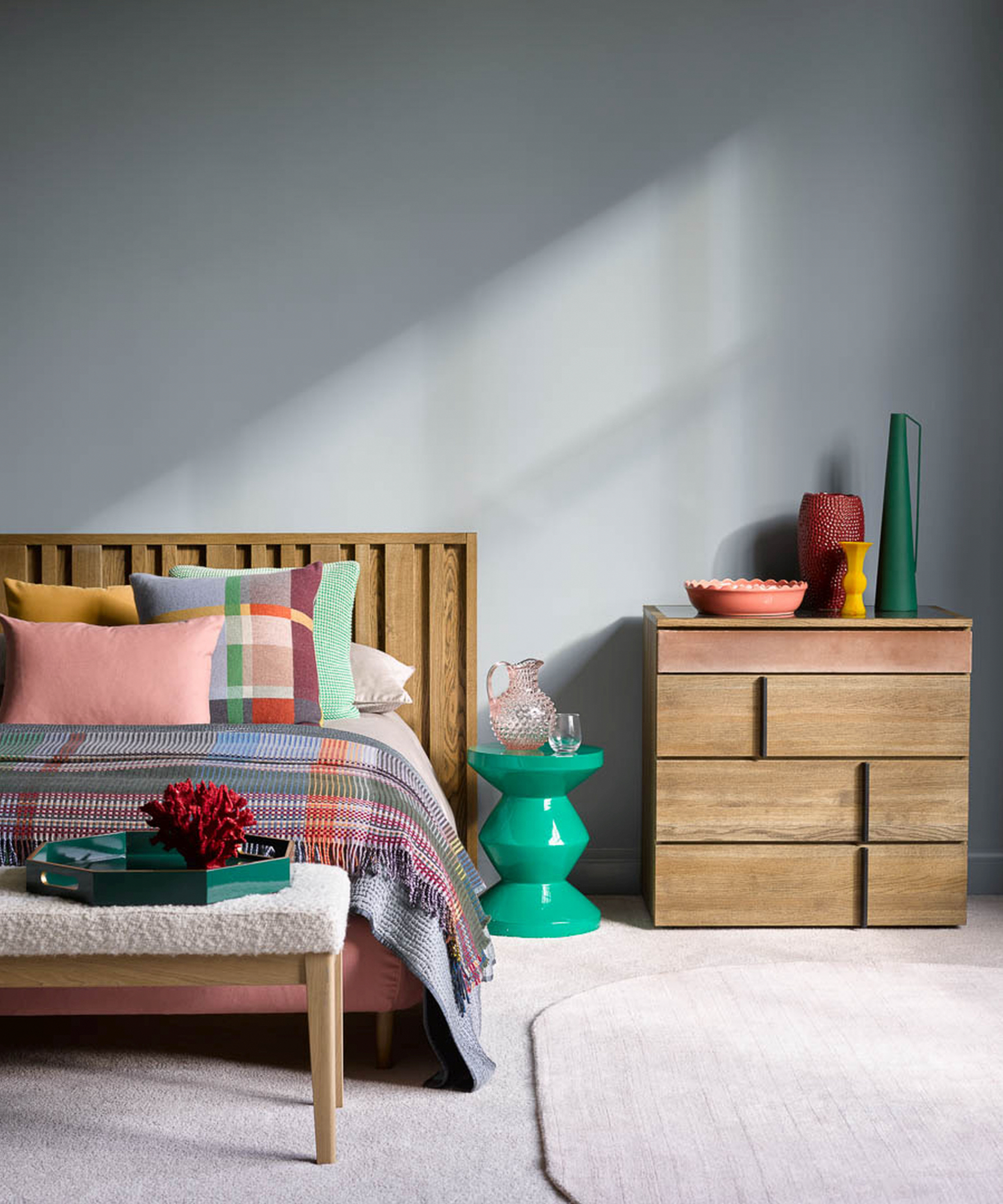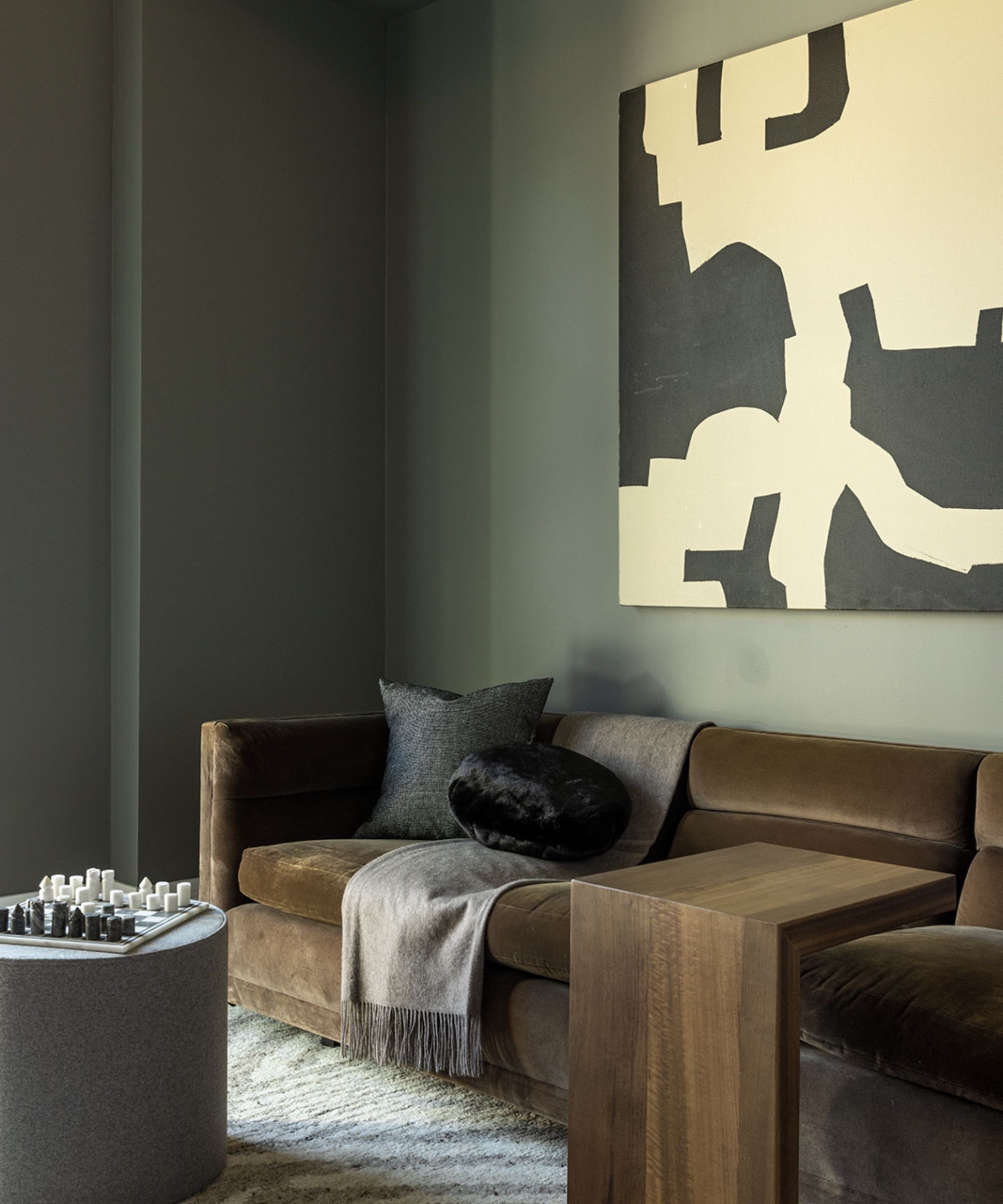How to add a personalized scent to upholstery to make sure it always smells nice
Infusing your furniture with fragrances is all about creating a personalized scent and finding the best methods to introduce it to your upholstery


Elevating the scent of your upholstery is an often overlooked aspect of interior design, with many of us only thinking to use diffusers, candles or potpourri to make our homes smell nice, however, infusing furniture with subtle fragrances can have a profound impact on the overall ambiance of your home.
You can customize the fragrance you use to infuse in your upholstery, ensuring it's in keeping with the atmosphere of your home. This is one of the hidden tricks people with nice smelling homes use to make their homes more inviting and relaxing.
Our experts have recommended how to make upholstery smell great with tips for the best ways to add a personalized scent to upholstery. This method is ideal for your couches, armchairs, beds, or even fabric dining chairs.
How to add a personalized scent to upholstery to make it smell nice
'There are various ways to infuse your upholstery with your bespoke home fragrance,' says Aleks Grigoriev, interior expert and co-founder of Priority Home Buyers. 'You can mix a few drops of your scent blend with water and mist it on your upholstery, use sachets filled with dried herbs and spices, or fabric sachets tucked between cushions.'
Not only will this improve the smell of your upholstery, but will also have the added bonus of making your home smell nice.
1. Choose the right fragrance

'Before embarking on your fragrant adventure, take a moment to understand the essence of your space,' advises Aleks Grigoriev. 'Is it a cozy living room, a vibrant bedroom, or a serene reading nook? The mood you wish to convey will play a crucial role in choosing the right scent.'
'Ensure that your personalized scent harmonizes with your existing decor rather than overpowers it,' adds interior designer, furniture expert, and founder of Dream Home Making, Elizabeth Grace.
Design expertise in your inbox – from inspiring decorating ideas and beautiful celebrity homes to practical gardening advice and shopping round-ups.
She continues, 'Begin by selecting a fragrance base that resonates with your personal preferences and complements your home's overall ambiance. Options include essential oils, fragrance oils, and natural herbs or botanicals.'
Aleks Grigoriev advises, 'Whenever possible, opt for natural ingredients like essential oils or dried herbs and flowers. These not only provide a more authentic scent but also contribute to a healthier living environment.'

Elizabeth Grace is an interior designer, furniture and home expert. She received her degree in interior design from the University of Notre Dame. Elizabeth landed her first job as an intern with a leading firm in New York City, learning from some of the city’s top designers. She currently works as an interior designer for both residential and commercial clients.
2. Fragrance layering

Aleks Grigoriev explains how to personalize your scent with fragrance layering: 'Every scent has three layers: top, middle, and base notes. Start by choosing a base note that resonates with your space. Earthy, woody scents like sandalwood or cedar can evoke warmth, while floral notes like lavender or rose can add a touch of elegance.'
'Middle notes serve as the heart of your fragrance. They provide depth and complexity. Spices like cinnamon, or herbs like basil, can work wonders.'
'Top notes are the first impression, the initial burst of fragrance that catches your attention,' continues Aleks Grigoriev. 'Citrus notes like lemon or bergamot can be uplifting, while minty scents like eucalyptus or peppermint can invigorate the atmosphere.'
Elizabeth Grace reminds advises, 'You'll want to experiment with different fragrance notes and ratios. Consider blending top, middle, and base notes to achieve a well-balanced and long-lasting aroma.'
3. Utilize essential oils for homemade fabric spray

To infuse your upholstery with a personalized scent, essential oils can be the most effective and easy-to-use option when used as fabric spray. Not only do essential oils provide a pleasant fragrance but also offer therapeutic benefits.
Essential aromatherapy oils offer a natural and long-lasting scent that is free from harsh chemicals. Janille Mangat at VMAP Cleaning Services suggests, 'Create a DIY fabric spray by mixing water and your favorite essential oils in a spray bottle. Start with a few drops of essential oil and adjust the strength of the scent according to your preference. Mist the upholstery lightly and allow it to air dry.'
As a general guideline, a good oil-to-water ratio would be 3 oz. of water to 20 drops of essential oils. 'Experiment with different combinations to find a blend that resonates with you,' advises Angela Rubin from Hellamaid.
For a wide range of essential oils to try out, we recommend this Wuhura Essential Oils Set of 36, from Amazon.

Hellamaid is an award-winning cleaning company in Canada that's been featured on multiple global media brands.
4. Keep it subtle

While a nice fragrance can enhance your furniture, it's important not to overpower the space with an overwhelming smell.
Angela Rubin says, 'Dilution ratios are crucial to ensure your upholstery doesn't become oversaturated with scent. A few drops of essential oil in a carrier oil like jojoba or sweet almond oil can create a subtle, balanced, and long-lasting fragrance.'
5. Scented sachets

'For those who prefer a more eco-friendly approach, experiment with dried herbs, spices, and citrus peels,' recommends Angela Rubin. 'These natural ingredients can be placed in sachets or even directly under upholstery to release a subtle, natural scent.'
If you have natural ingredients in your garden, you can select some, such as harvesting lavender, to use in your scented sachets.
'Craft scented sachets by filling small pouches with your chosen scent blend. Tuck these sachets between upholstery cushions or under furniture for a subtle and enduring fragrance,' continues Angela Rubin.
These can also be placed in cushion covers or hung over bed frames.
You can use these Cotton Muslin Bags, from Amazon.
6. Fabric softener sheets

Janille Mangat says, 'Another option is to tuck fabric softener sheets between couch cushions, under seat covers. These sheets come in various scents and can help keep upholstery smelling fresh. Be sure to replace them periodically for a lasting effect.'
For example, you can add a lavender-infused dryer sheet, such as these Downy dryer sheets, from Amazon, in your couch cover.
5. Test small areas first

Before applying scented products to your upholstery fabric, it's important to test a small, unnoticeable area, such as the back or undercarriage of a sofa. Since some materials will be sensitive to certain products, this is to ensure the scents you are infusing into your furniture will not cause any staining or other adverse reactions.
'Be mindful of your upholstery material,' advises Angela Rubin. 'Some materials may not react well to direct contact with oils.'
If there is no effect, go ahead and infuse your sofa with your personalized scents.
FAQs
How to tailor your upholstery scent to the seasons?
'Tailor your upholstery scent to the seasons. Opt for warm, spicy scents like cinnamon and cloves in the fall and winter, and go for lighter, floral scents in the spring and summer,' recommends Angela Rubin from Hellamaid. 'This keeps your home feeling fresh and seasonally appropriate.'
How to choose scents to infuse your upholstery to improve your sleep?
If you are choosing scents to infuse into your bedding and upholstery to improve your sleep, the best option can be a combination of lavender and chamomile. This has been found to reduce anxiety, promote sleep, and improve sleep quality. You can do this with sprays made with essential oils, scented sachets or scented fabric softener sheets in pillowcases.
How to maintain nice scents on your upholstery?
Elizabeth Diana, interior designer at Sparkinity recommends, 'To maintain a delightful scent, it's essential to refresh your upholstery periodically. This can be as simple as re-spritzing your DIY fabric freshener or adding a few drops of essential oil to fabric sachets tucked discreetly between cushions or under furniture.
'Avoid over-saturating the upholstery, as excessive moisture can lead to mildew.'
'Don't be afraid to experiment and enjoy the process,' says Elizabeth Grace. 'Your scent should reflect your unique style and personality, making your home a true reflection of you.'
Be sure that before you scent your upholstery, make sure to first clean it. Vacuuming and spot cleaning regularly will remove any unpleasant odors and help your personalized scent last longer.
Julio Arco, interior designer and founder of Bark and Chase leaves us with one final tip: 'Consider focusing fragrances on natural textiles that are great at absorbing scents such as wool, silk, and cotton.'

Lola Houlton is a news writer for Homes & Gardens. She has been writing content for Future PLC for the past six years, in particular Homes & Gardens, Real Homes and GardeningEtc. She writes on a broad range of subjects, including practical household advice, recipe articles, and product reviews, working closely with experts in their fields to cover everything from heating to home organization through to house plants. Lola is a graduate, who completed her degree in Psychology at the University of Sussex. She has also spent some time working at the BBC.